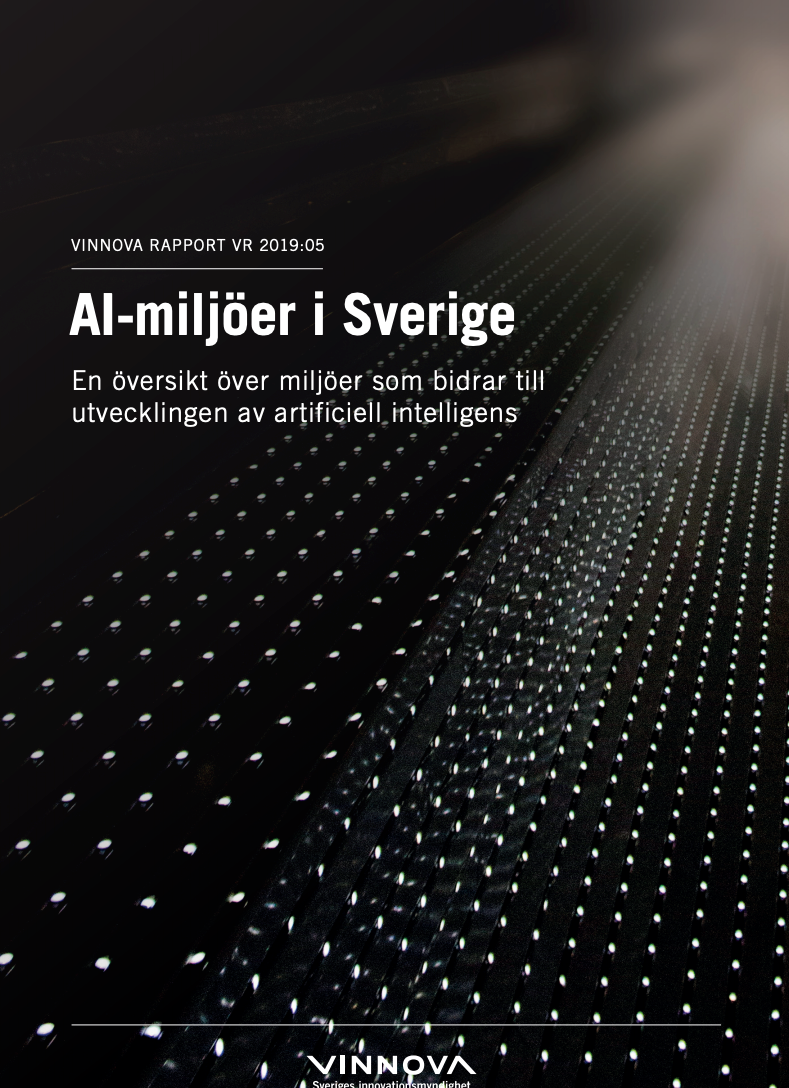Vinnova lists AI environments in Sweden.
Vinnova has written a report summarizing environments developing AI, and BigData@BTH is listed as one of them. More information can be found at https://www.vinnova.se/globalassets/mikrosajter/ai/rapport-om-ai-miljoer-i-sverige.pdf
Our translation of Vinnova’s summary in the report.
Artificial intelligence (AI) can be defined as the ability of a machine to mimic intelligent human behavior. Artificial intelligence is also the name of the science and technology areas where the activity aims to study, understand and develop computers and software with intelligent behavior.
This report presents research and innovation environments (FoI environments) that have taken on a leadership and that collect and coordinate development forces and competences for the development of artificial intelligence. The environments have different characteristics and consist of research and educational environments, testbeds, incubators, hubs, arenas, and networks.
The purpose of the survey is to gather information about environments in Sweden that work for the development of artificial intelligence on a non-commercial basis. The information will provide increased knowledge of the innovation system that promotes the development of artificial intelligence: who is driving development, how, and where in Sweden these environments exist. The study is carried out as a survey and the environments have been identified by people with a good knowledge of the innovation system for AI development which have given input to the survey. What is described here as an environment is characterized by cooperation where people and organizations interact in the same area and with a common purpose.
The overview contains 39 AI environments working for the development of artificial intelligence. Most of them are domiciled in universities, colleges or institutes while some are international.
This mapping shows a part of what is being done in the development of artificial intelligence in Sweden. The picture can be said to reflect the focus and leadership on and for the area. The environments described in the overview have different character, profile, and focus. However, everyone have a breadth in their business and combine research and innovation, education, networking, and system impact. They vary in terms of openness to participation, but they all work for the development of artificial intelligence on a broad front and in more respects than only for their own organization.
Some environments do not explicitly describe that their activities are aimed at the development or research of artificial intelligence, but have an activity that is highly relevant to how artificial intelligence can develop. Such activities may focus on, for example, machine learning, large data processing (big data), and blockchain techniques. Collaboration and partnership are important for the environments’ activities, though in different ways. There are environments that unite actors from many different sectors and industries, while others are based on a tighter partnership. In several cases, partners are also funders. All environments have funding that have been applied for in competition from actors such as KAW (Knut and Alice Wallenberg Foundation), Swedish Research Council, Growth agency, KK Foundation, Vinnova, regions, or various EU programs.


Leave A Comment